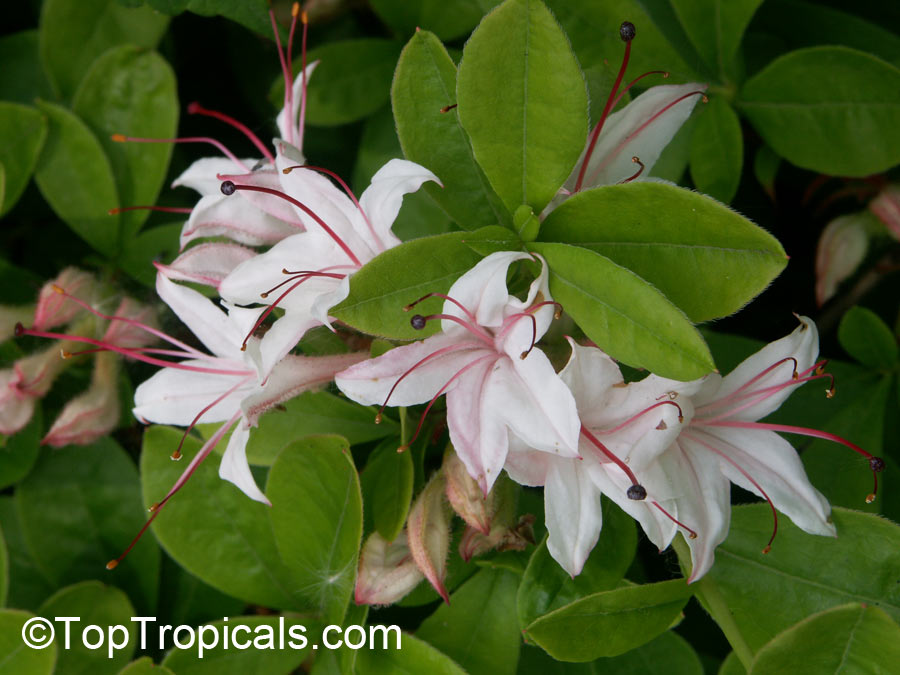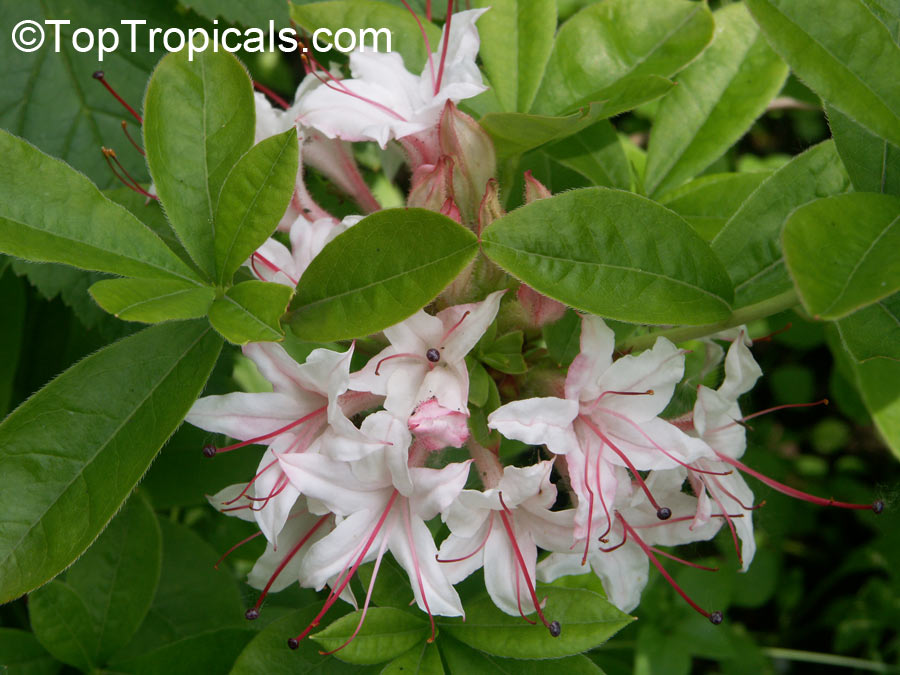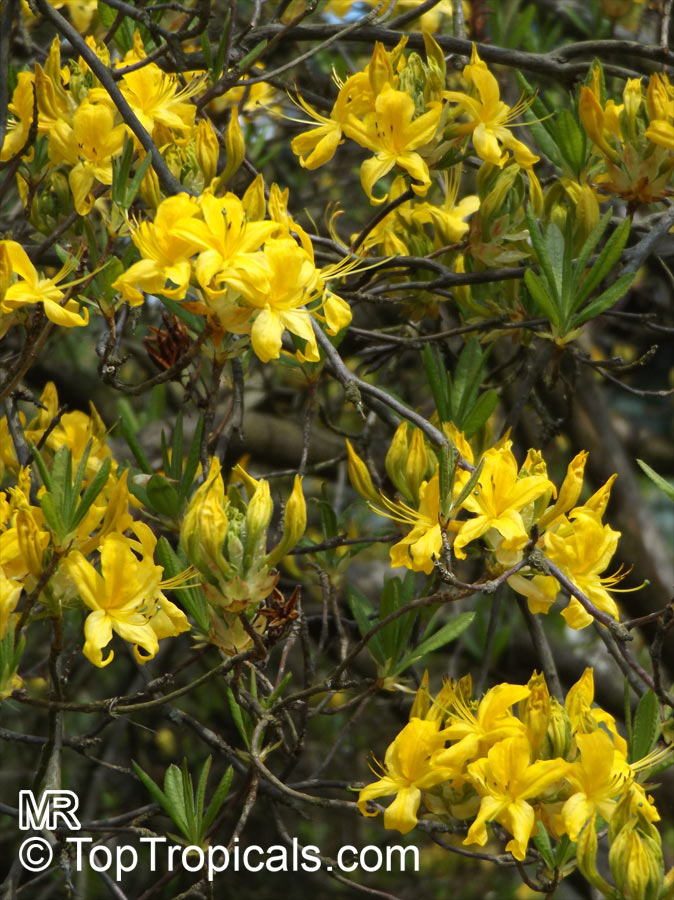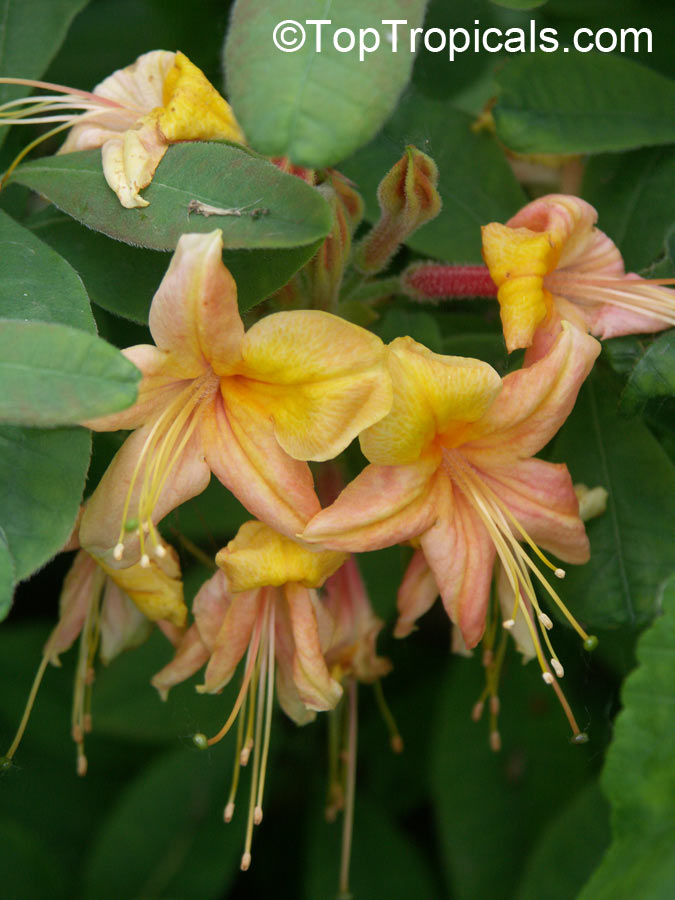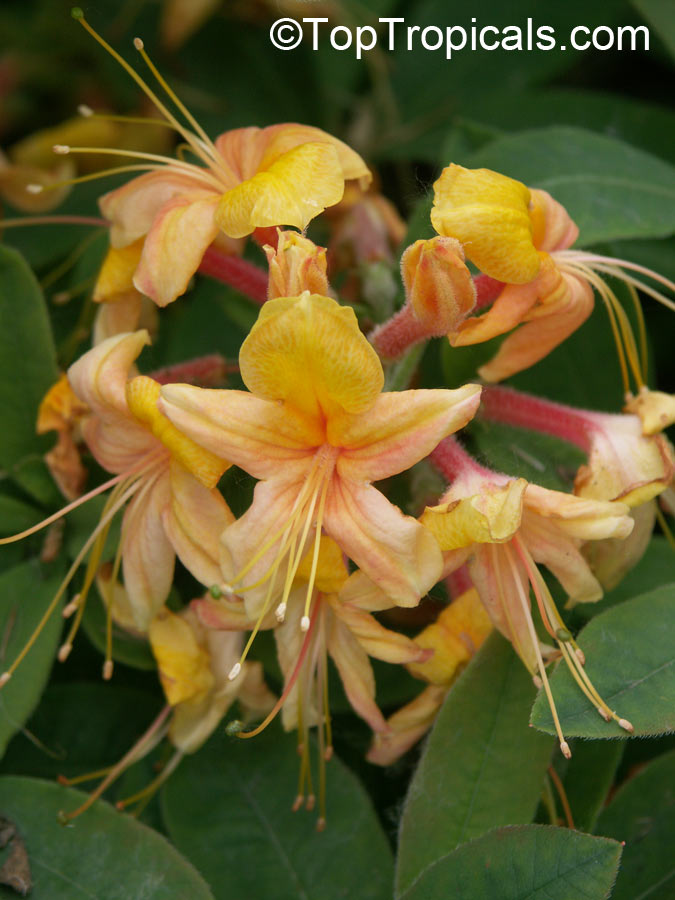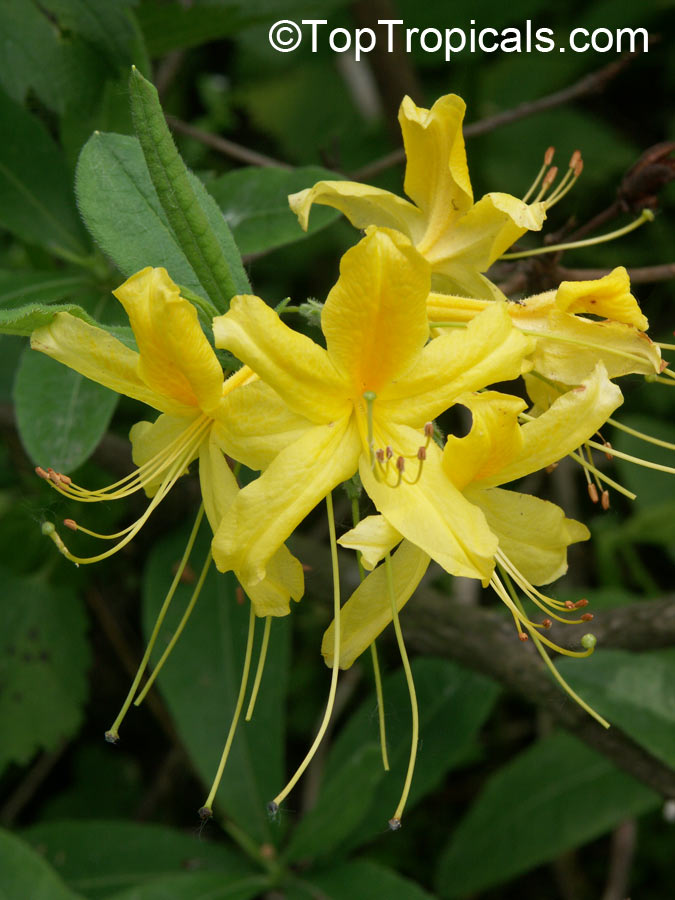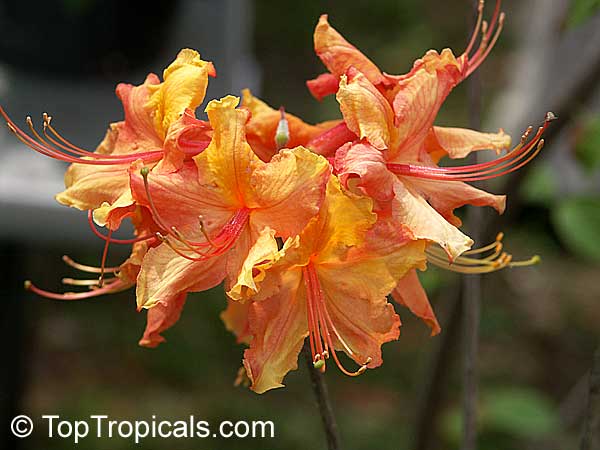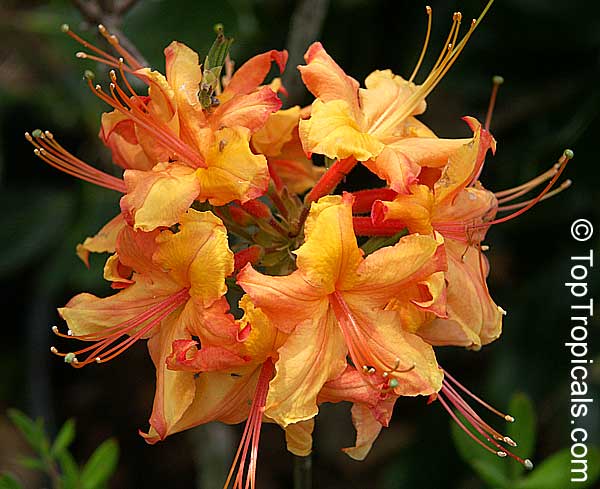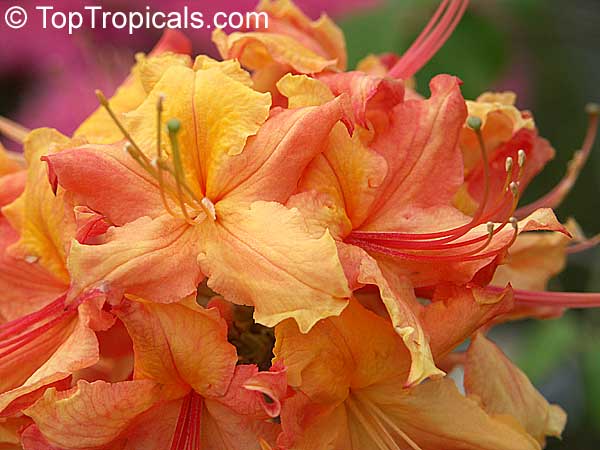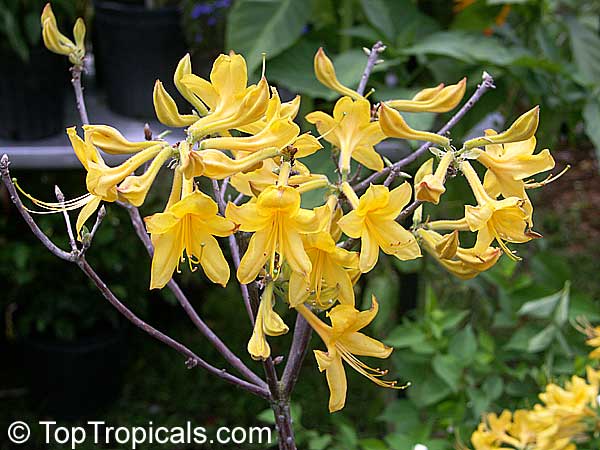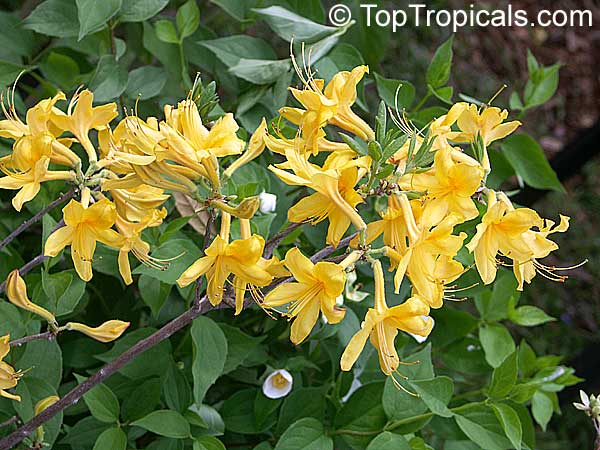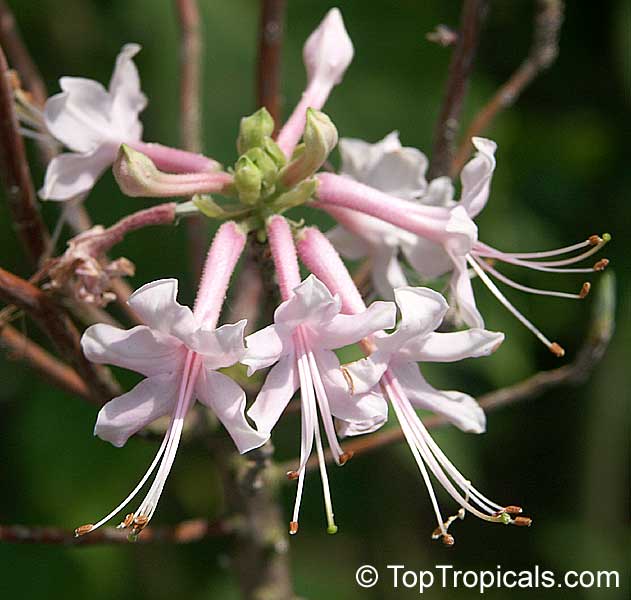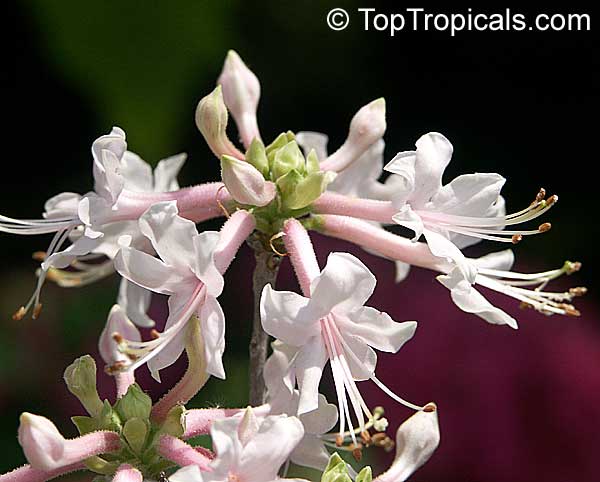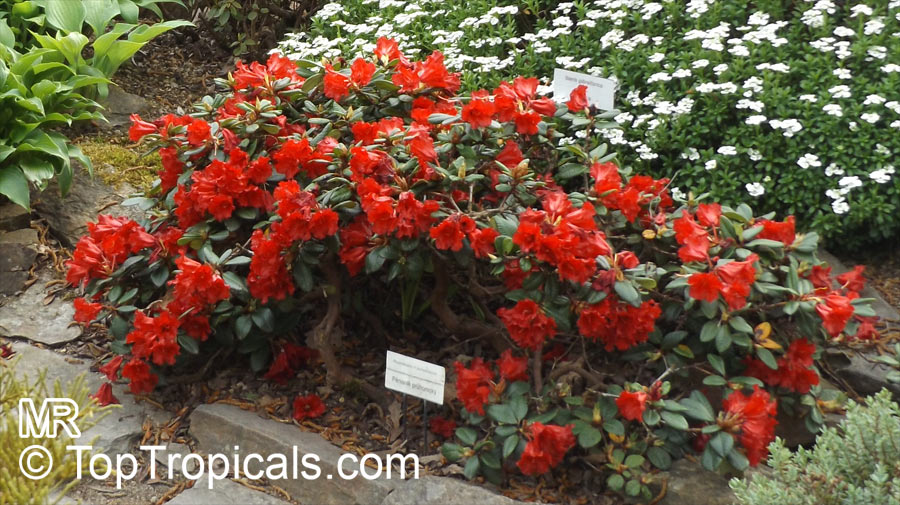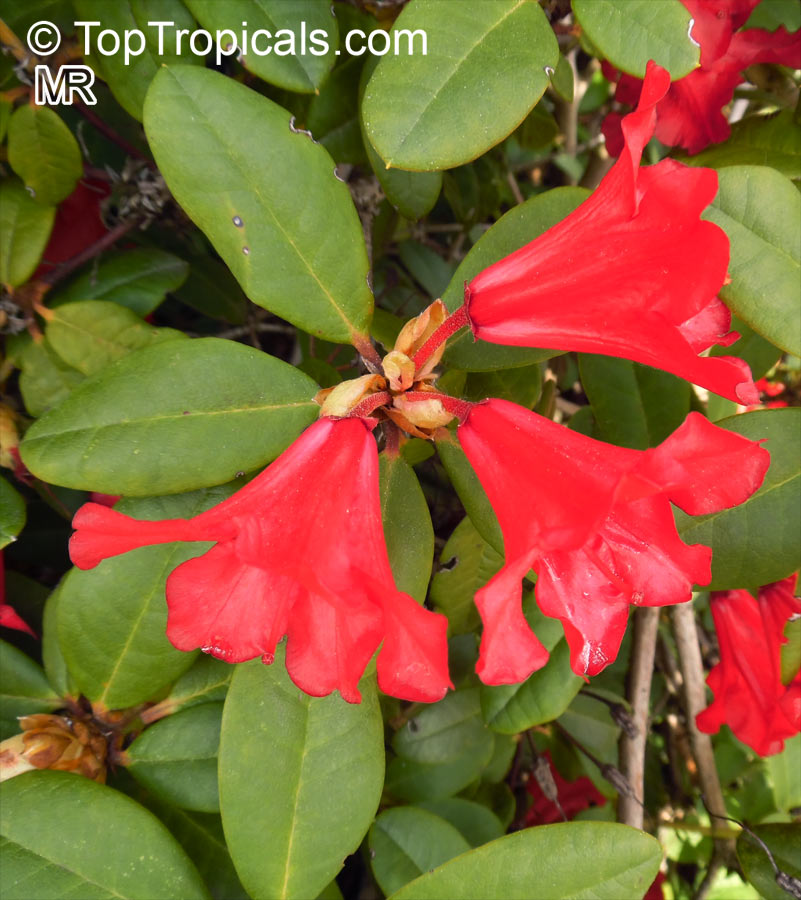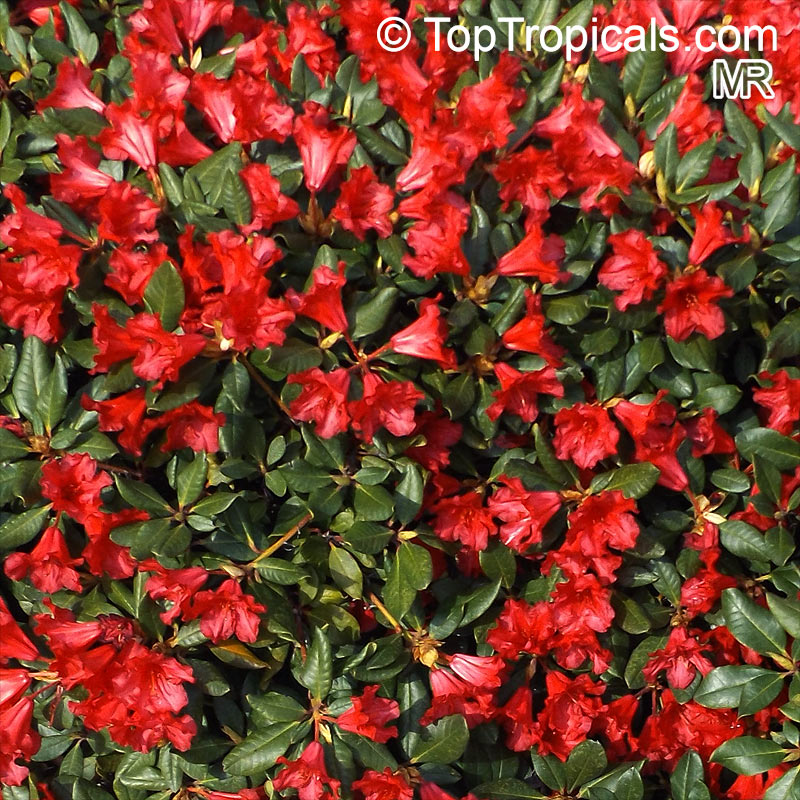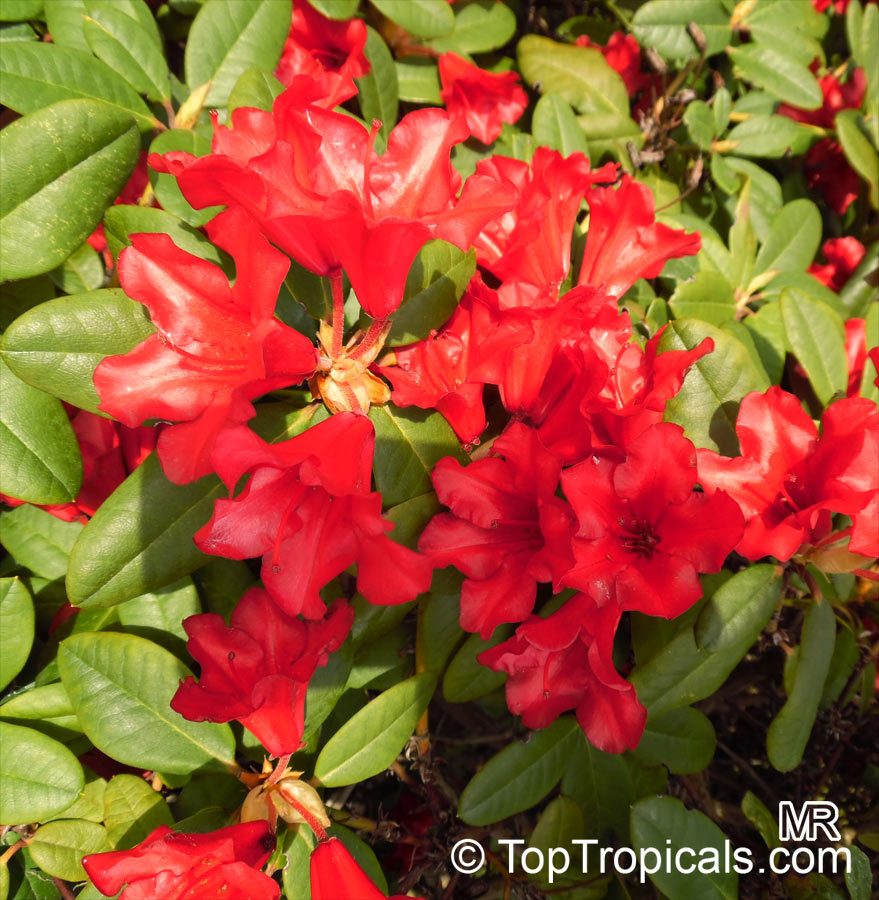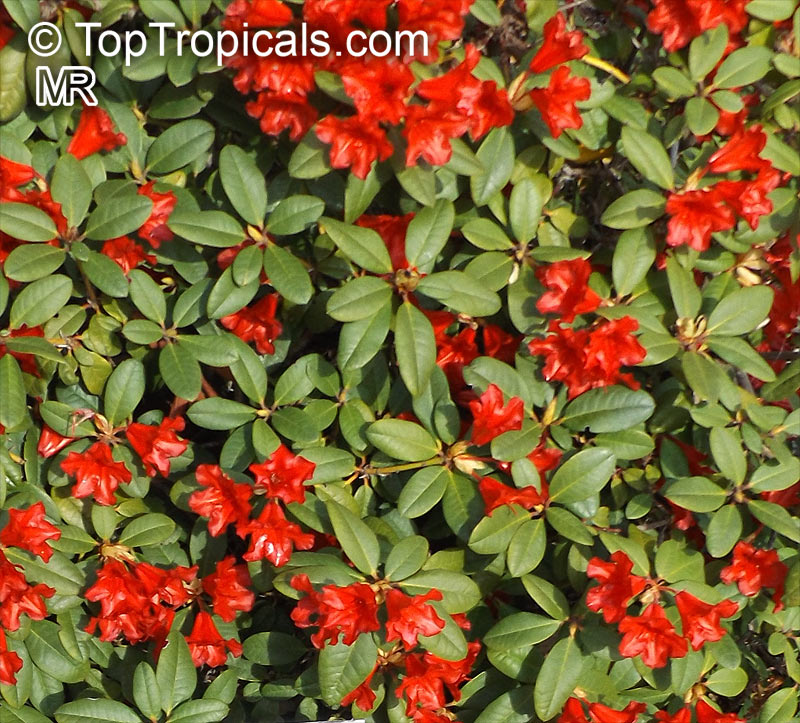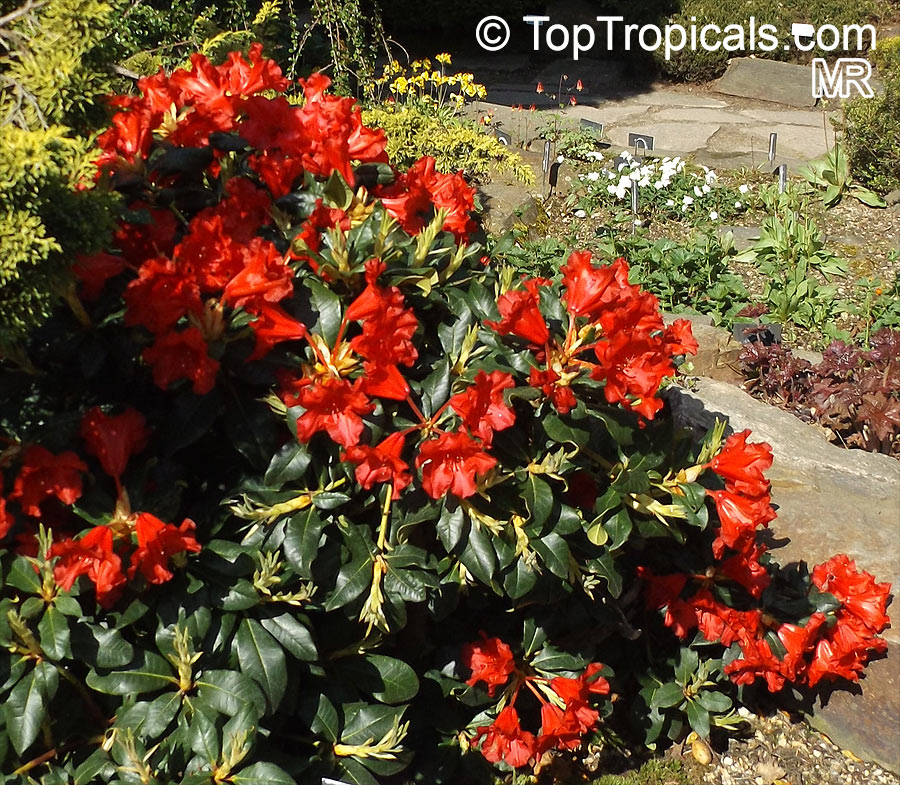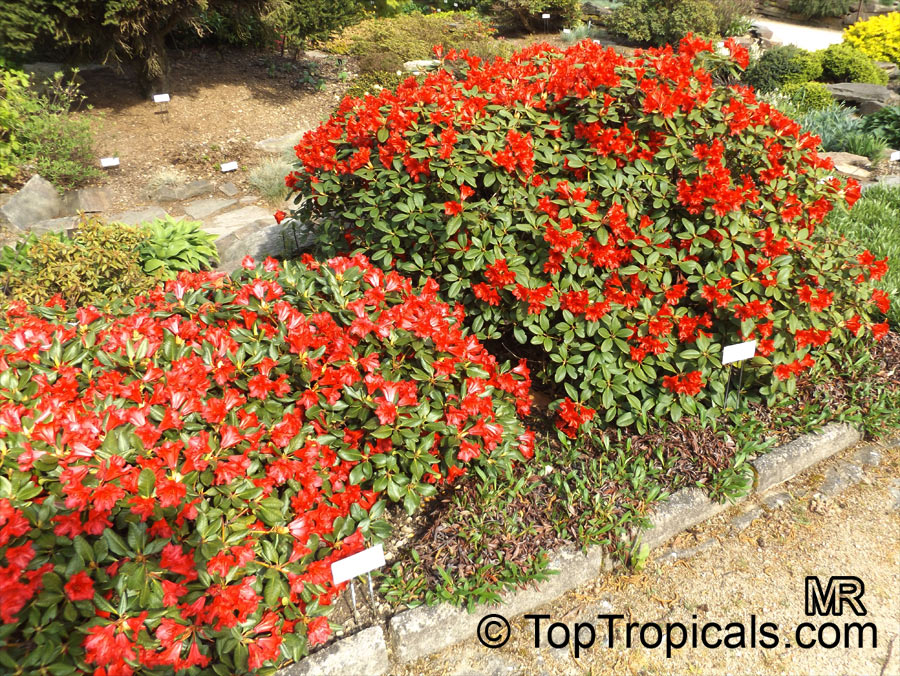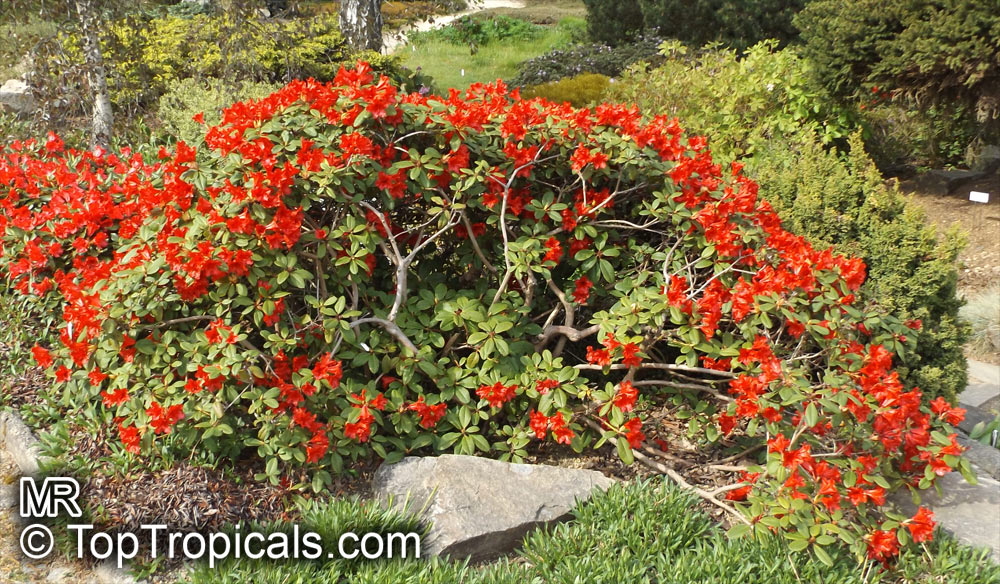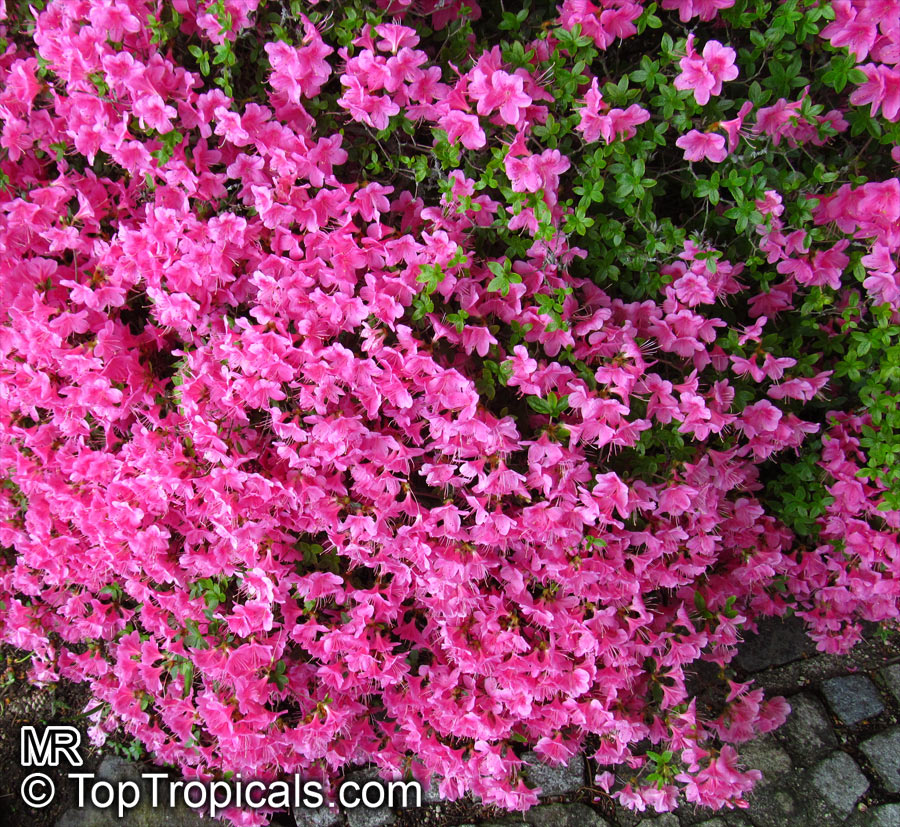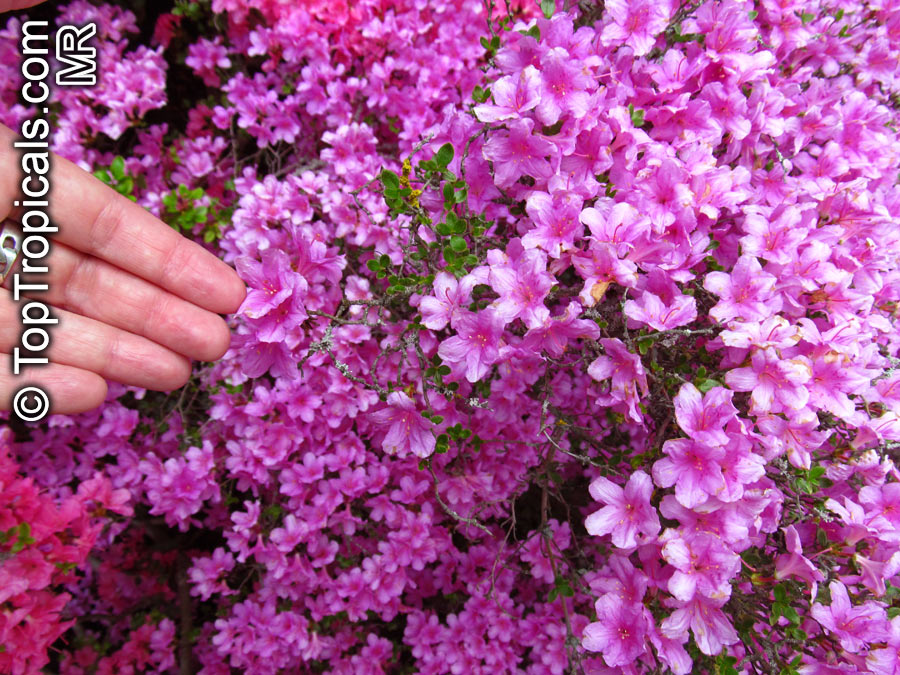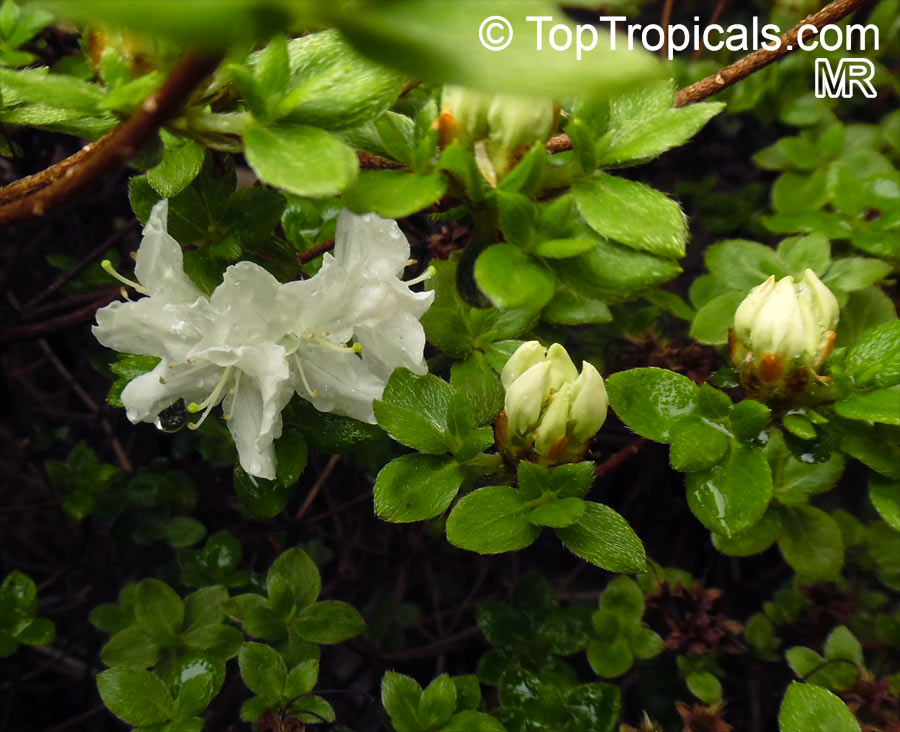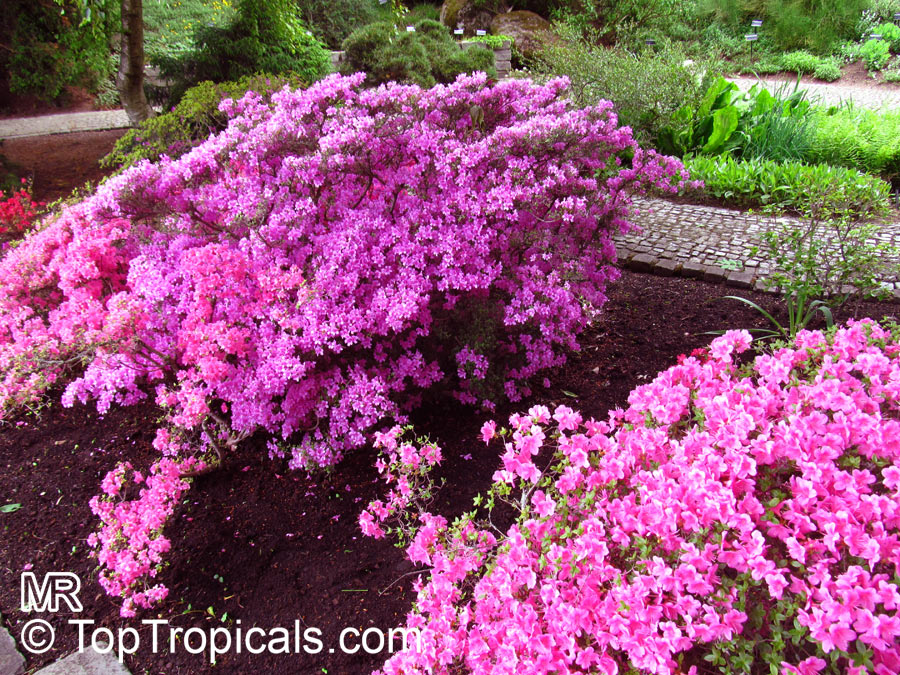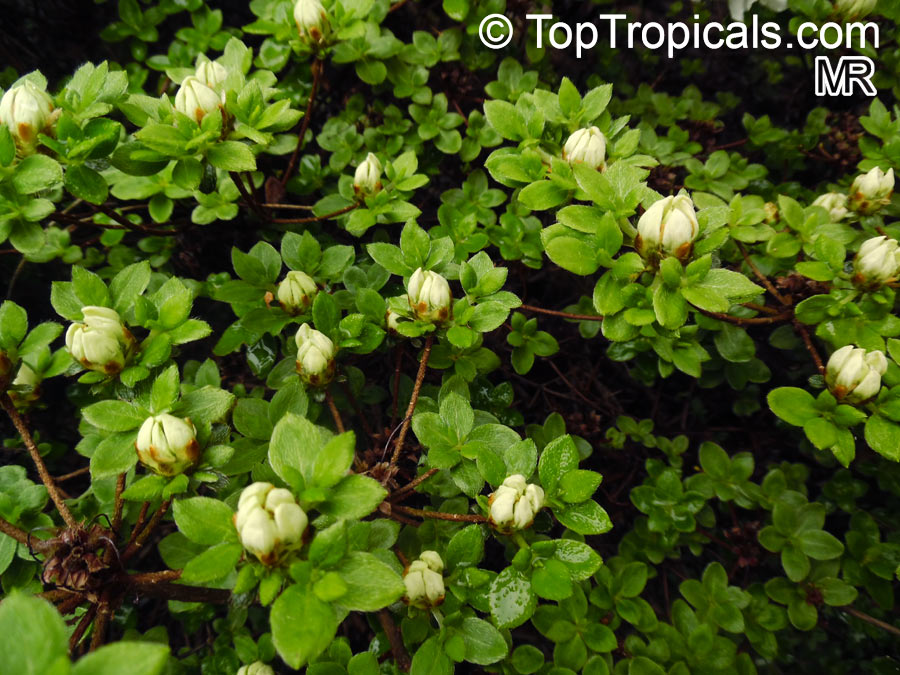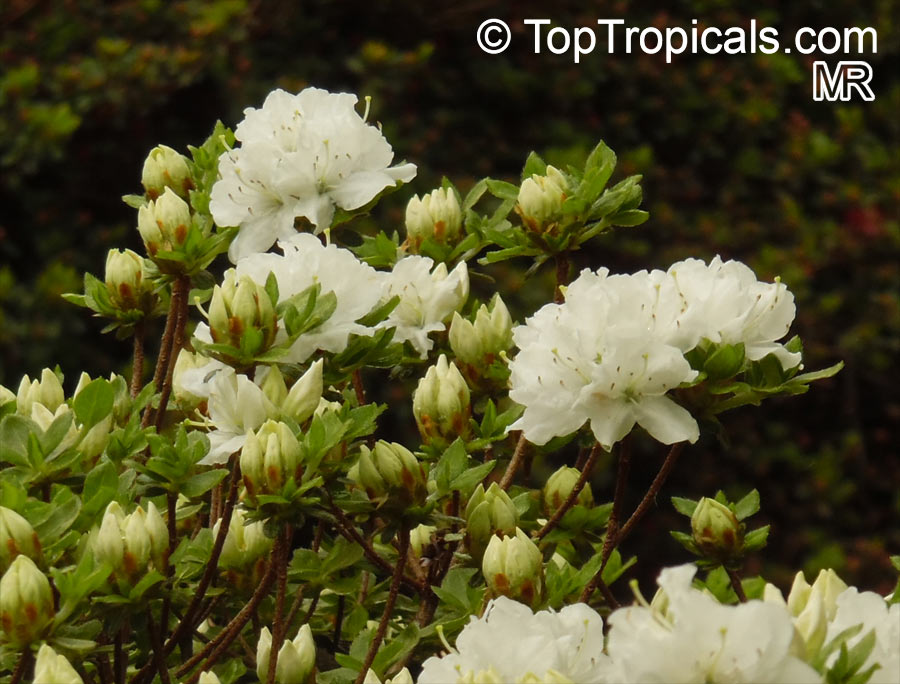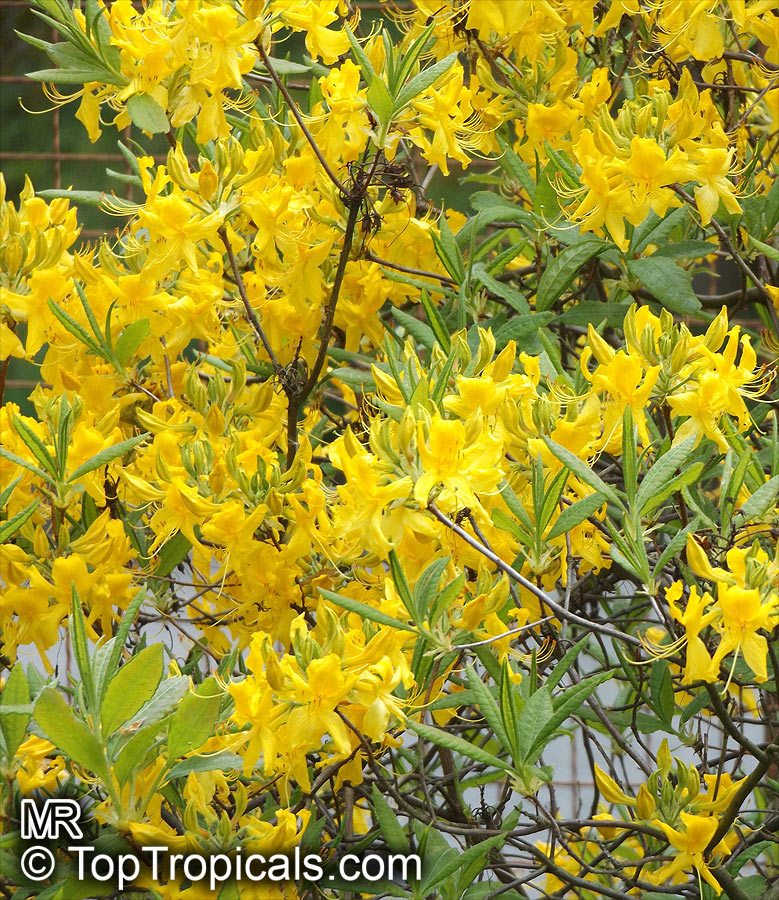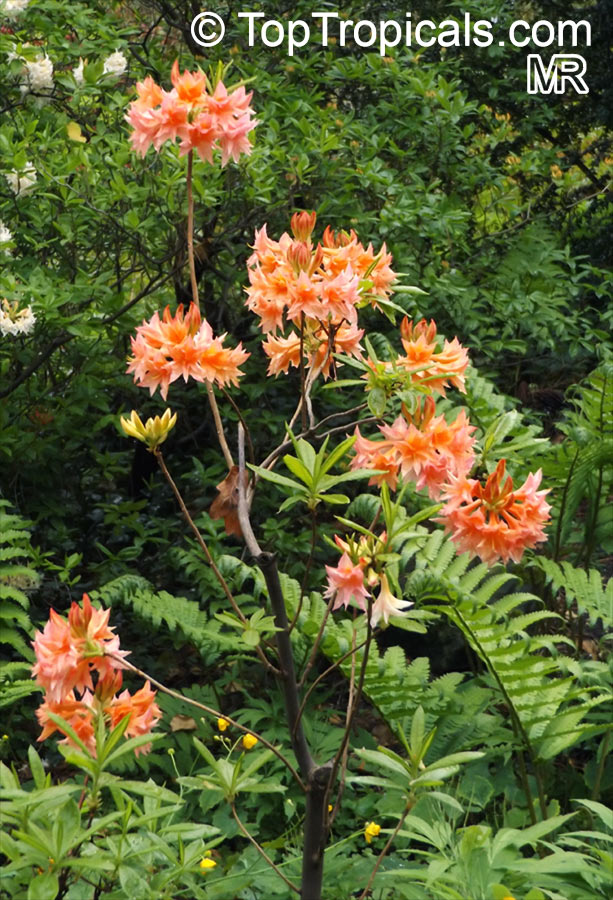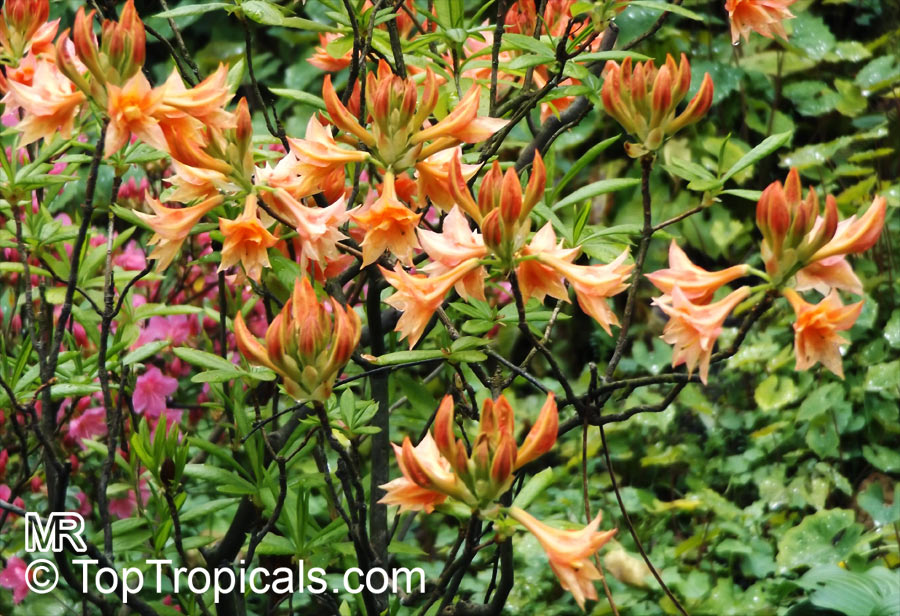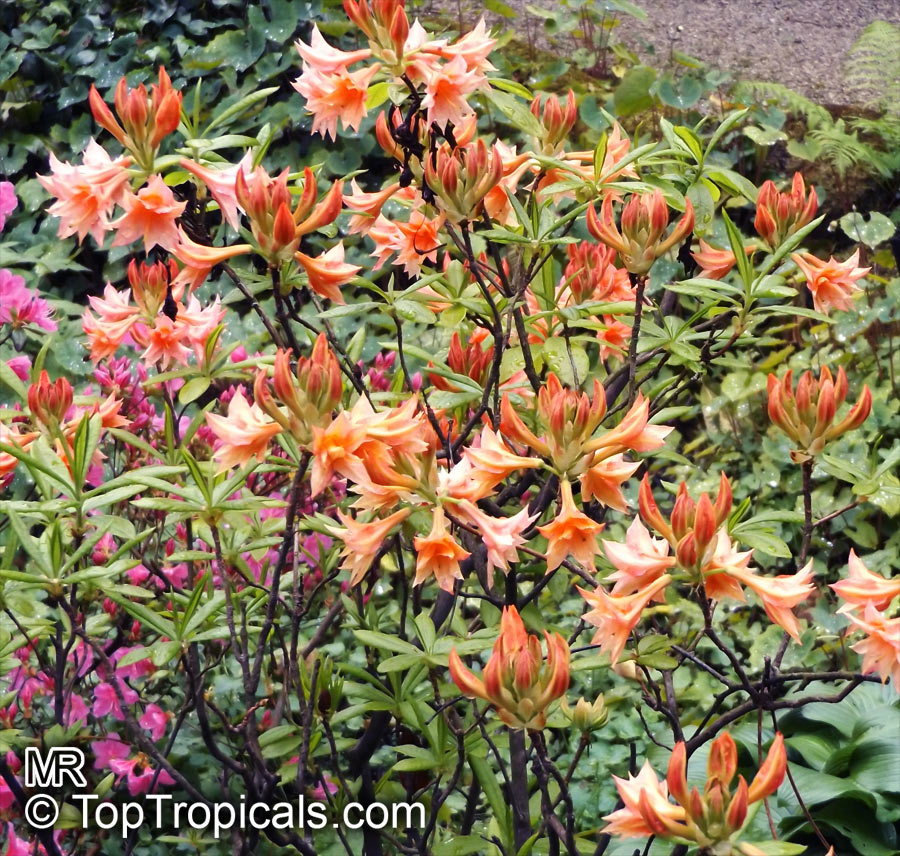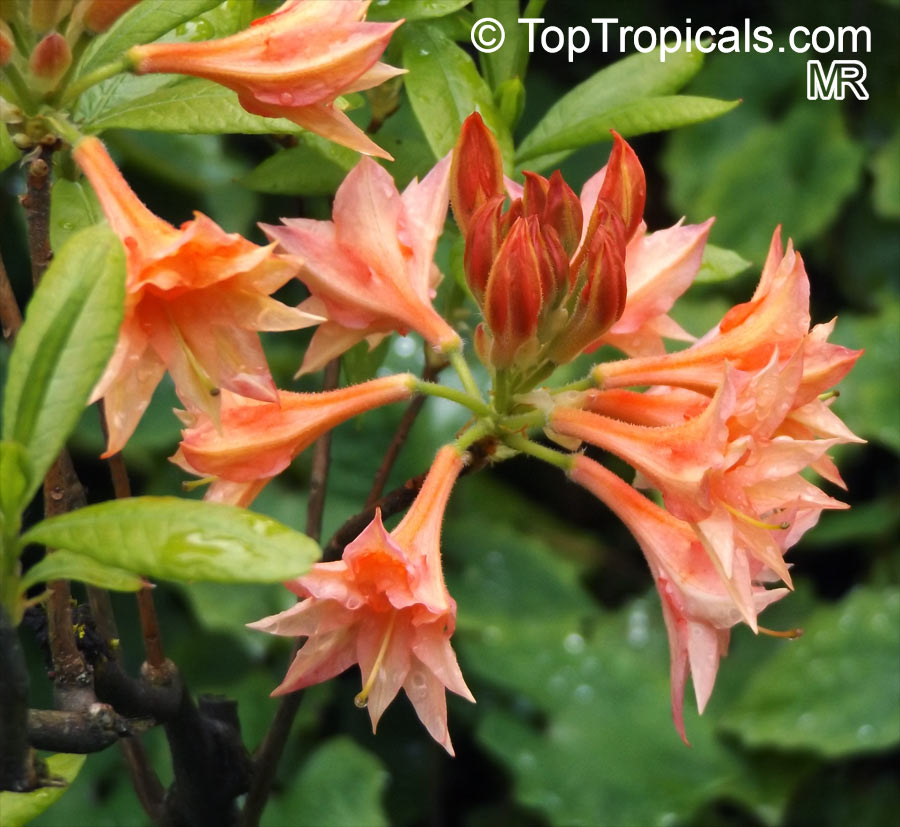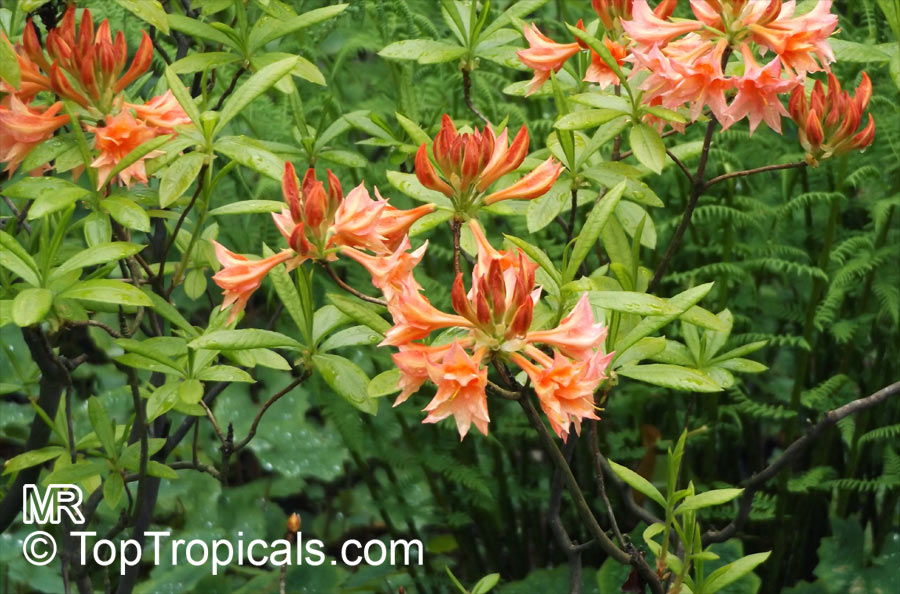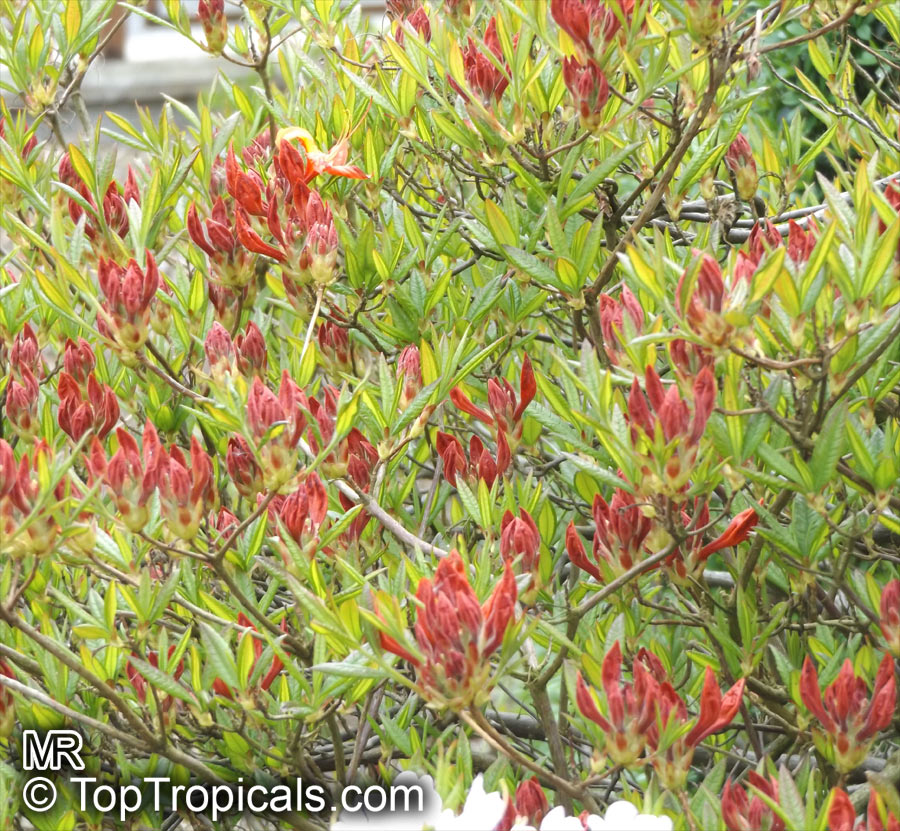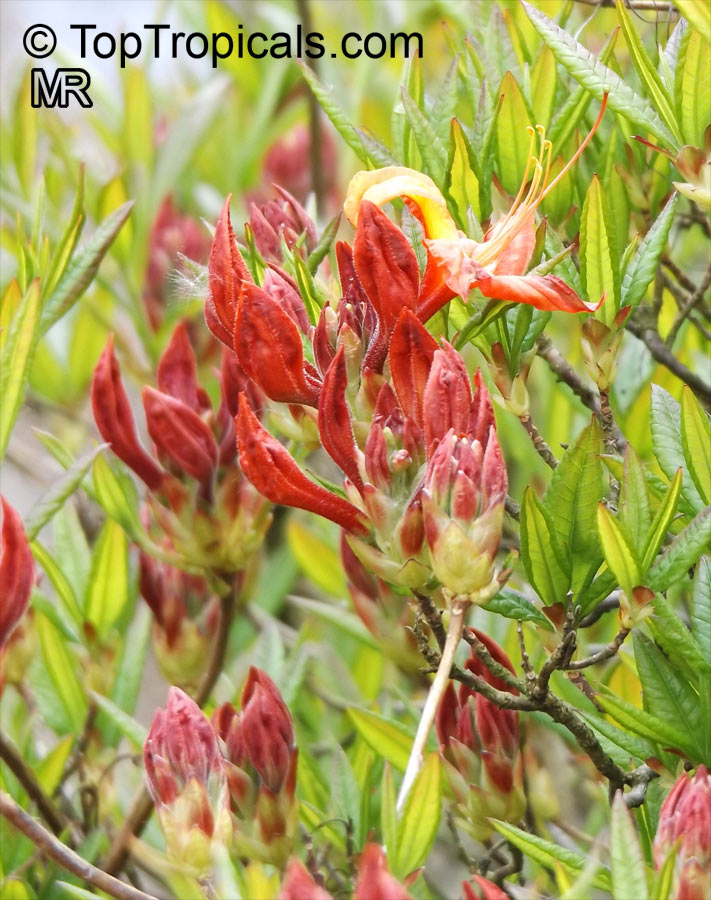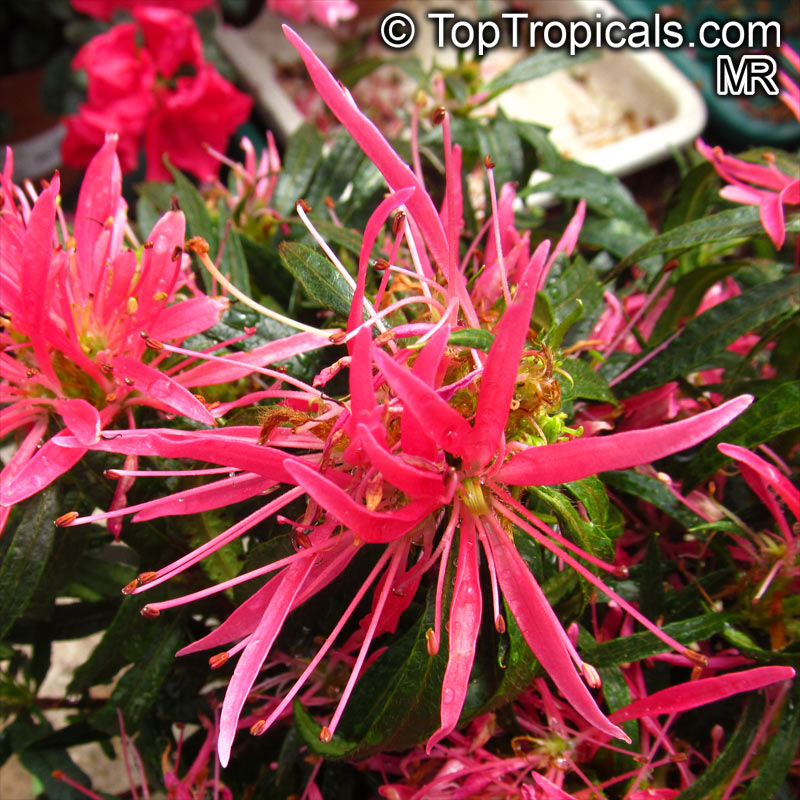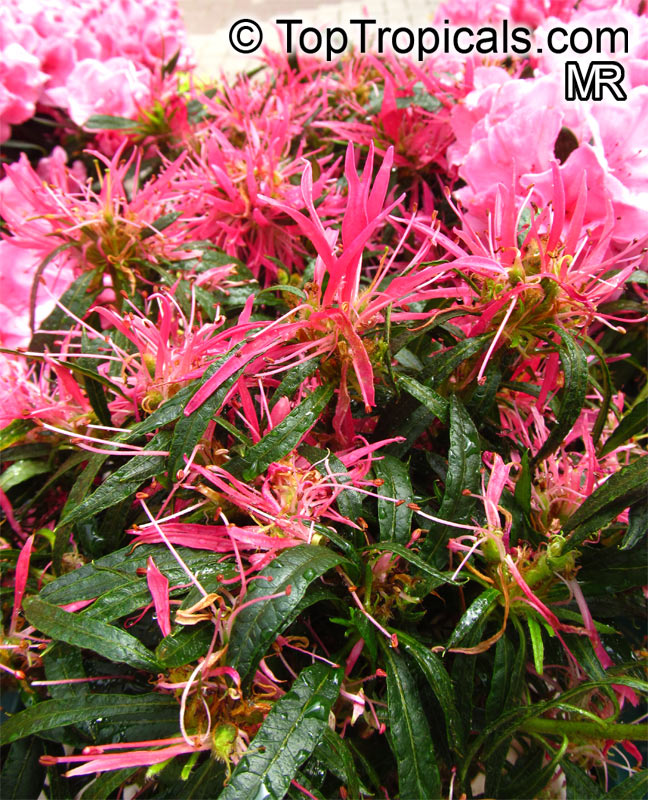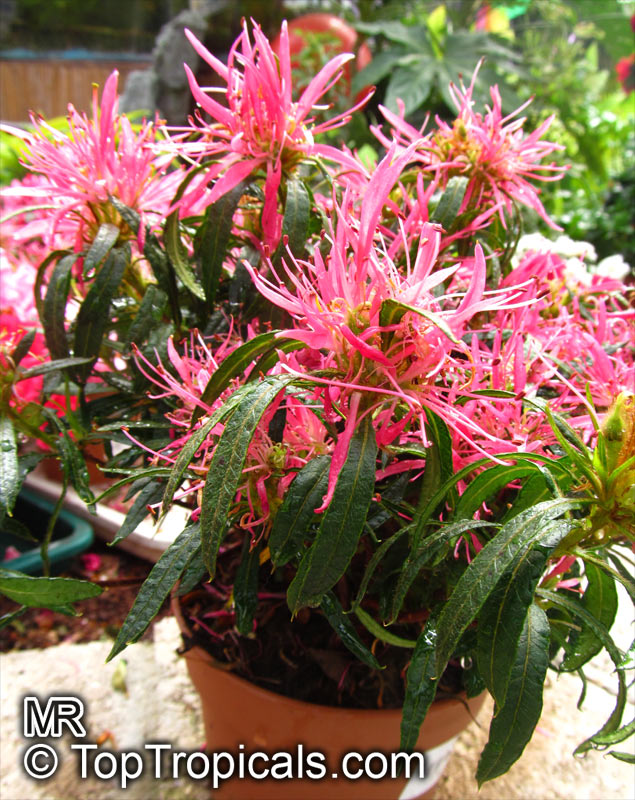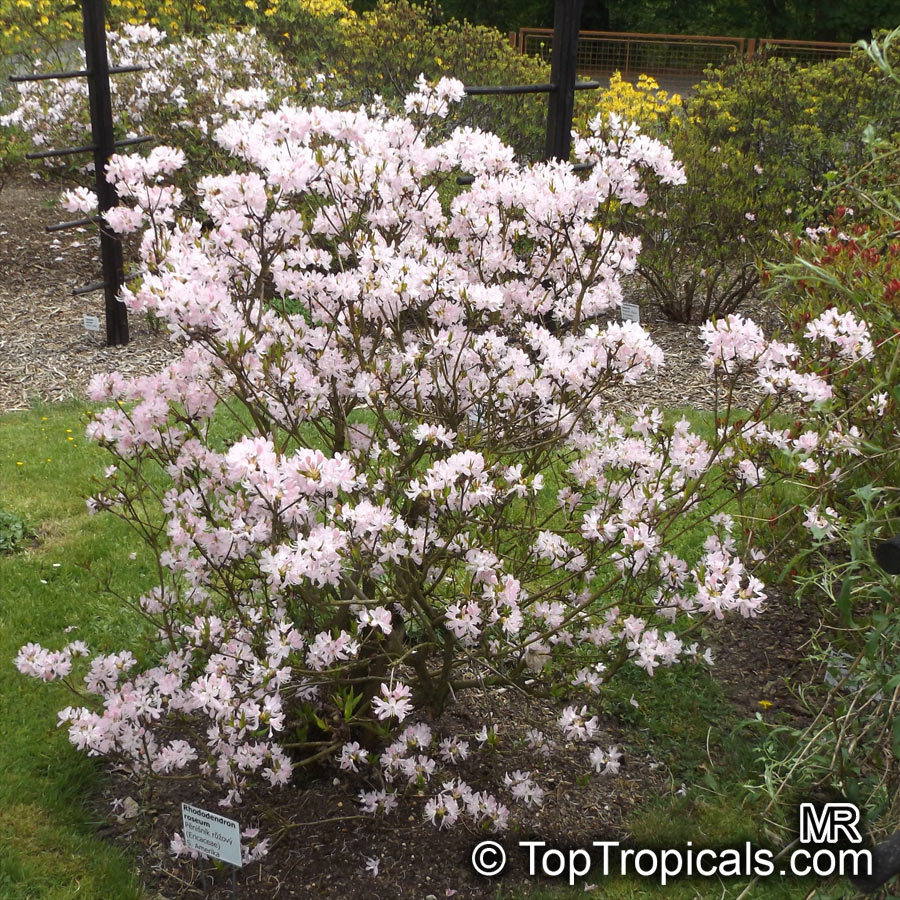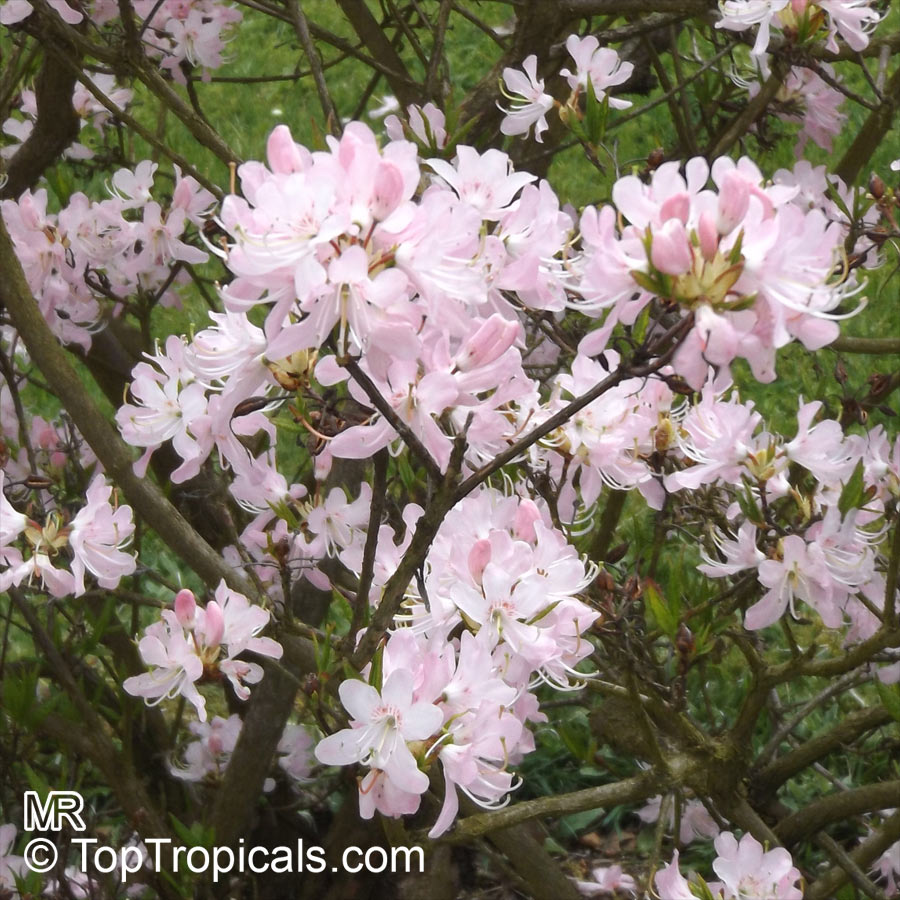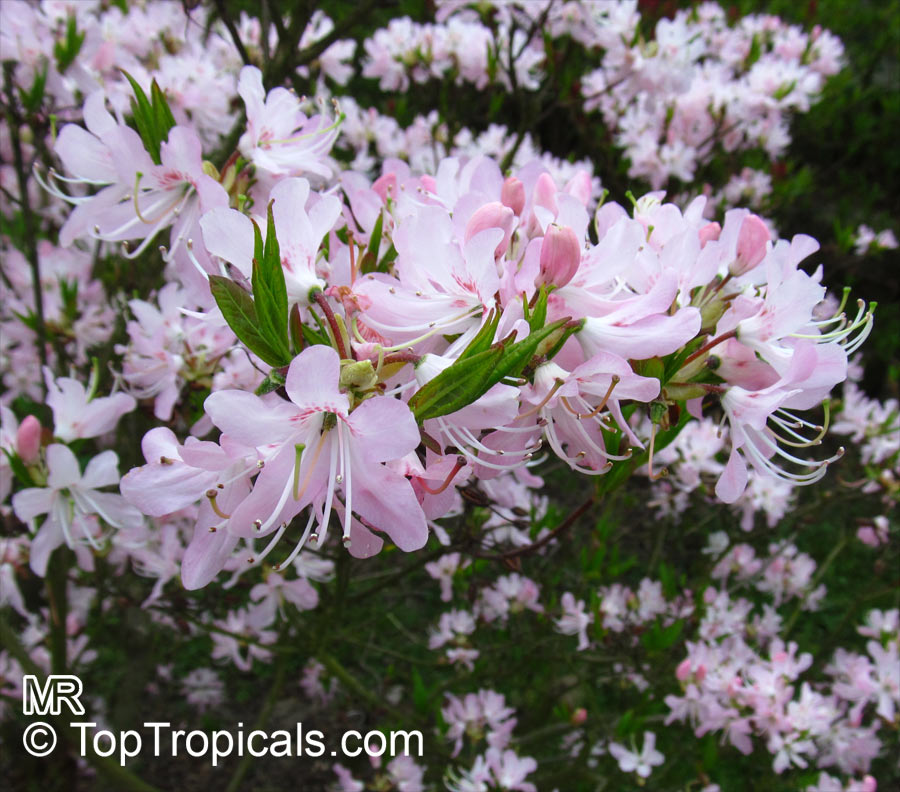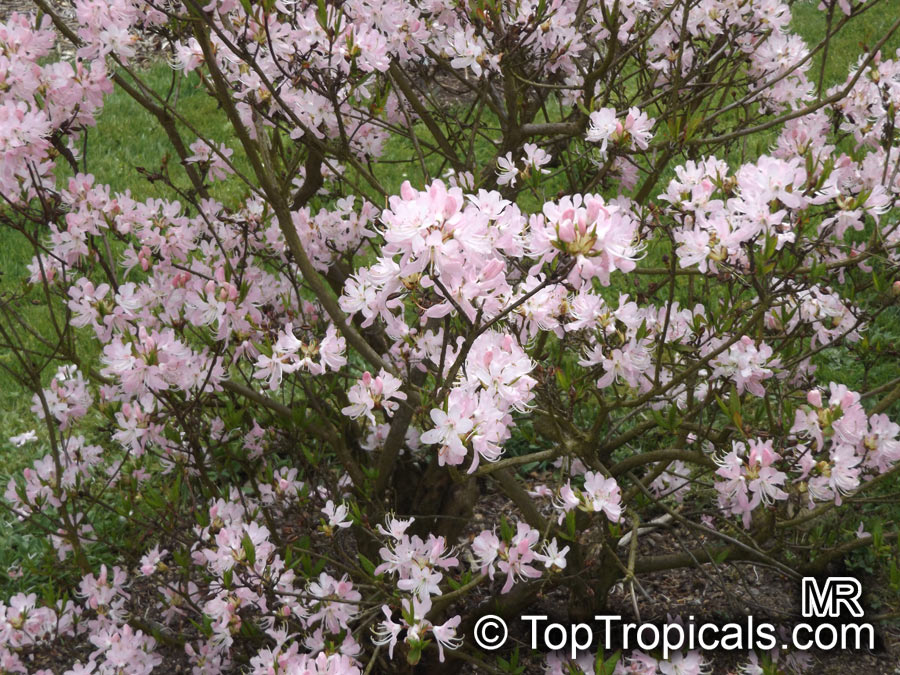Azalea - Plant Encyclopedia Results
Top Tropicals Plant Encyclopedia
| Number of plants found: 13 | Next | 
|
Go to page: | 1 | 2 |
Botanical name: Rhododendron austrinum
Common names: Florida Azalea, Orange Azalea
Family: Ericaceae
Origin: Florida








Rhododendron austrinum, or the Florida Azalea, is native to Florida and parts of the southeastern United States. It usually grows as a single large shrub, typically 5-10ft tall, or a small shrub, 2-5ft tall. This evergreen plant can also be used for bonsai as it has attractive glossy foliage and stunning yellow, orange flowers, which are very fragrant and attractive to butterflies and hummingbirds.
Rhododendron austrinum is best grown in USDA Zone 9-11, in an area of full sun exposure with regular water. It can also tolerate partial shade, but the blooming will be minimized for this condition. When grown in cooler regions, such as Northern climates, growing the Rhododendron austrinum in a protected area and in a pot is highly recommended. to increase its chances of survival, place the pot in a sunny area, such as a sheltered porch or a heated greenhouse, and water frequently. A well-draining potting soil should be used.
When exiting dormancy, Rhododendron austrinum requires higher levels of water than usual. To prevent flower bud aborting in cooler climates, place a protective layer of mulch around the plant in the fall and refrain from pruning plants.
In summary, Rhododendron austrinum, or the Florida Azalea is an evergreen shrub with attractive glossy foliage and stunning yellow, orange flowers, which are very fragrant and attractive to butterflies and hummingbirds. It grows best in full sun, with regular water, in USDA Zone 9-11, especially when grown in a pot in cooler regions. When exiting dormancy, Rhododendron austrinum needs higher levels of water and a protective layer of mulch needs to be placed around the plant in the fall to prevent flower bud aborting.
Botanical name: Rhododendron canescens
Common names: Wild Honeysuckle, Piedmont Azalea, Hoary Azalea
Family: Ericaceae
Origin: EN America







Rhododendron canescens is a hardy shrub that deserves wider landscape use. The 4 to 5 foot plant makes a spectacular spring show since the flowers open before the leaves have expanded. Rose pink to white flowers clusters in early spring; delicate sweet fragrance.
Botanical name: Rhododendron forrestii
Common name: Azalea
Family: Ericaceae







Rhododendron forrestii (Azalea) is a small plant that can grow up to 5 feet tall. It requires regular watering and grows best in full sun conditions. The foliage is almost hidden by the glowing red, crimson, and vinous flowers that bloom in abundance when the weather warms up. This plant is cold hardy in USDA Zone 7-9.
To plant Rhododendron forrestii, it is best to wait until spring. Water regularly in the first season and apply a light, slow-release fertilizer. An ideal soil for this plant should be slightly acidic and well drained.
In cold regions, Rhododendron forrestii can be grown in containers and overwintered indoor. When planting in containers, ensure that the container chosen has drainage holes at the base to prevent waterlogging. Once planted, keep the soil moist by watering and feeding during the growing season. When containerizing, it is important to use a well-drained potting soil mix.
Elisabeth Hobbie is variety with short, glossy dark green leaves and loose clusters of bright crimson-scarlet, bell-shaped flowers that are 2 inches in width. It blooms from early spring.
Botanical name: Rhododendron luteum
Common names: Yellow azalea, Honeysuckle Azalea
Family: Ericaceae
Origin: Southeastern Europe









Botanical name: Rhododendron sp.
Common name: Azalea 'Freya'
Cultivar: 'Rhododendron Sp.'
Family: Ericaceae









A deciduous, compact shrub bearing fragrant, funnel-shaped, orange-pink flowers in late spring to early summer.
Botanical name: Rhododendron sp.
Common name: Azalea 'Pallas'
Cultivar: 'Rhododendron Sp.'
Family: Ericaceae









Botanical name: Rhododendron stenopetalum
Common name: Spider Azalea
Cultivar: 'Linearifolium'
Family: Ericaceae
Origin: Japan







This semi- evergreen azalea cultivar from Japan is unusual for its very narrow leaves. The pink, fragrant flowers are likewise almost strap-like, and appear in terminal clusters of about three.
Botanical name: Rhododendron vaseyi
Common name: Pinkshell Azalea
Family: Ericaceae
Origin: North America








Rhododendron vaseyi is among the first and most beautiful spring-flowering native azaleas to bloom with masses of light pink bell-shaped flowers on leafless stems. It is endemic to North Carolina in the United States, where it is known only from the Blue Ridge Mountains.
| Next |  |
Use link to repeat this search:
https://toptropicals.com/cgi-bin/garden_catalog/cat.cgi?find=Azalea&search_op=and&keyword_op=and&language=e&number=10
&no_change_lang=1&user=tt&sale=1&first=0
